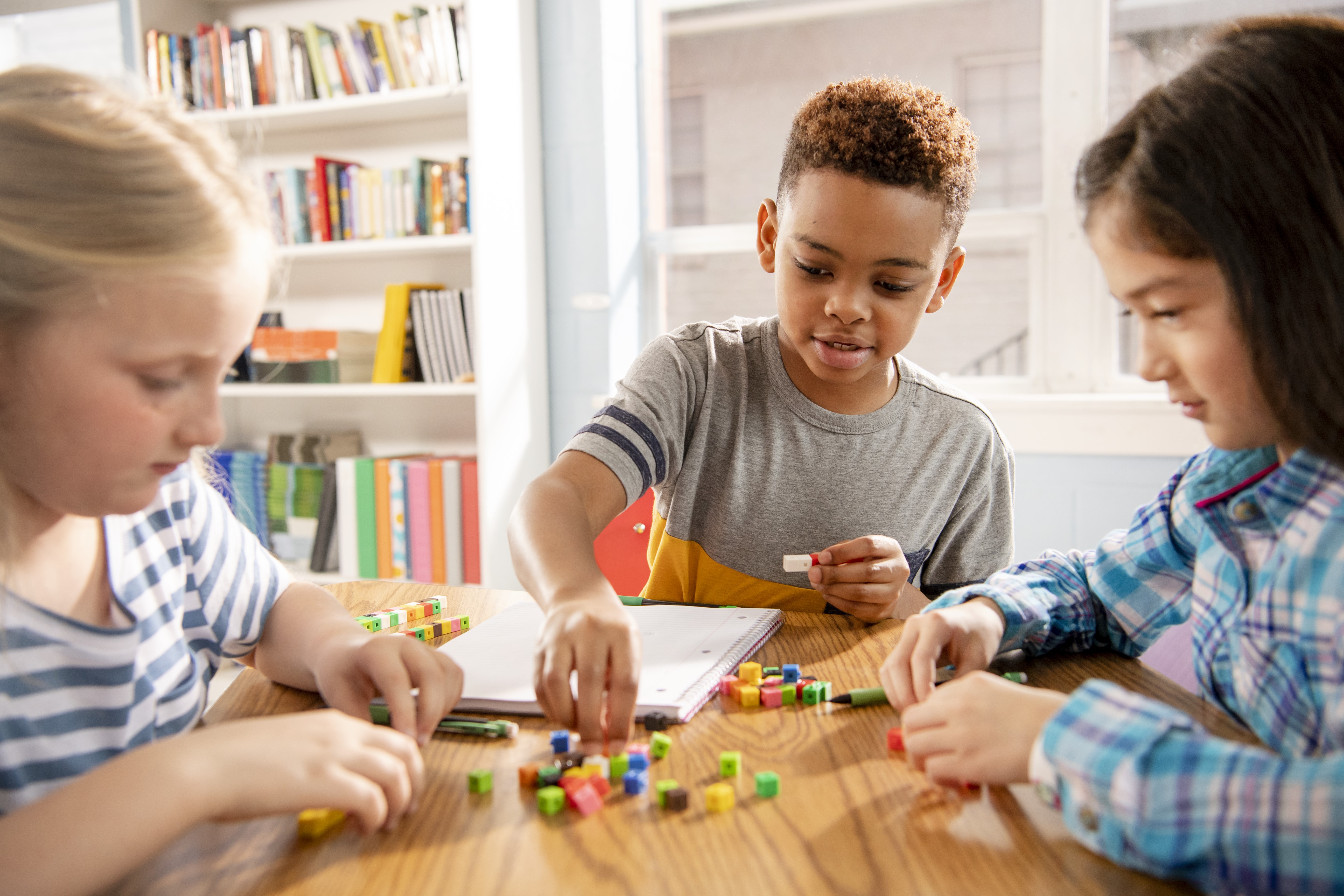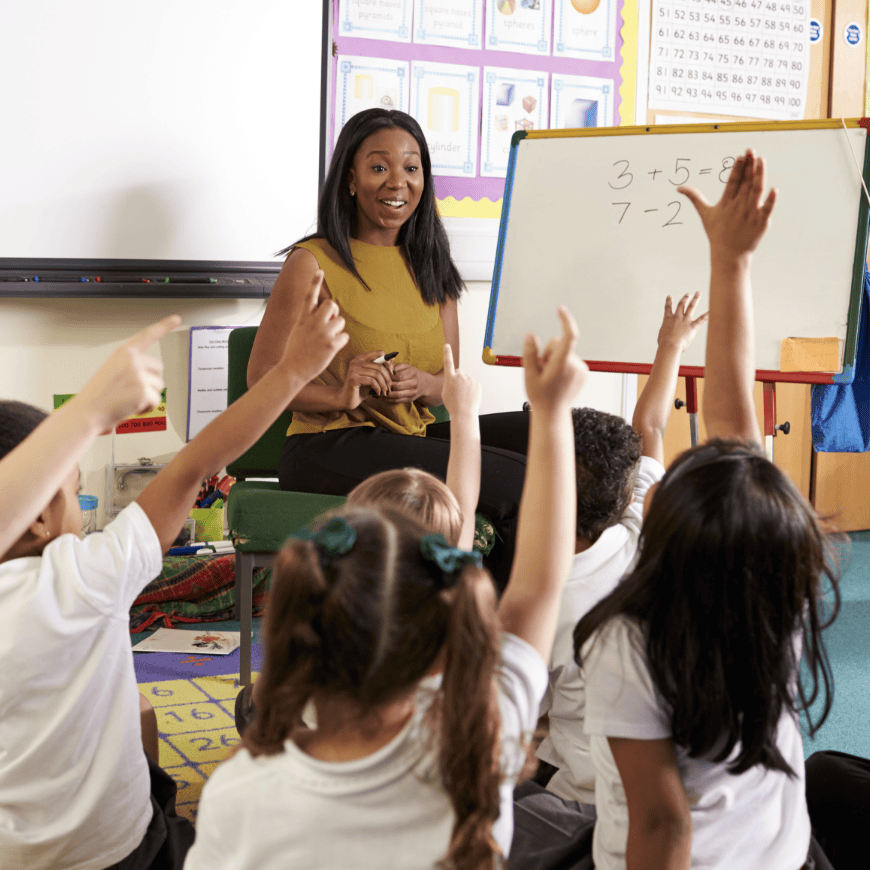Posted in: Aha! Blog > Eureka Math Blog > Implementation Support > Excellent Instruction in Extraordinary Times
To say that the 2019–2020 school year was out of the ordinary would be an understatement. Because of the pandemic, you’ve taught students from your kitchen tables and couches instead of in traditional classrooms. You’ve learned new technologies and found ways to stay connected. As that chapter closes and the new school year begins, we as educators face a lot of uncertainty. But we’ll be okay. We can meet this moment.
At Great Minds®, we believe that every child is capable of greatness. We believe in equity in education. We believe that every child deserves to be challenged with grade-level content.
And we’ve designed Eureka Math® to bring these beliefs to life. You see them in action as you teach each new lesson. You might be wondering, “How can I maintain these ideals this school year?” Let’s look at what those beliefs mean and how you can bring them into your teaching practice with Eureka Math in Sync™ and Eureka Math Equip™. Whether your classroom is in your school building, on a computer, or made up of some blend of the two, Eureka Math has got you covered.
All students need access to a high-quality curriculum and direct instruction on new content.
Your students are best served when fully engaged within the conceptual framework and trajectory of their grade-level content. Each Eureka Math lesson is designed so all students can access and engage with new learning at their grade level. The lessons have a balance of conceptual understanding, procedural skills and fluency, and application. That intentional design maintains rigor so that students become deep, mathematical thinkers with knowledge they can bring to their future learning.
Eureka Math is a rigorous high-quality curriculum. How can you ensure that students are getting essential direct instruction on new content when the COVID-19 pandemic has disrupted your normal class routine?
First, start the year with Module 1 of the current grade level. Don’t reteach entire missed modules from previous grade levels. Instead, focus only on the most relevant foundational knowledge that students need to access the new grade-level content. Fill in any gaps in foundational knowledge with short fluencies or mini-lessons so that students spend most of their time with new content. Sprinkling in immediately relevant foundational knowledge is more effective for closing those gaps and allows students to make connections to current grade-level content.
When your teaching includes a virtual component, consider delivering new content asynchronously. A video is a great way for students to get direct instruction. If the lesson is delivered by recorded video, you can save your limited time with students for rich conversations that promote deep, rigorous learning.
Eureka Math Equip provides you with pre-module assessments to check students’ understanding of the essential foundational skills for each module. It also offers recommendations for supporting lessons and fluencies to fill any student knowledge gaps and guidance on when to use those recommendations. Additionally, you’ll get advice on how to adjust pacing to accommodate the supporting content.
A vital element of student learning is teacher-facilitated peer-to-peer discourse.
Student discourse is a critical part of every Eureka Math lesson. Students learn to make connections, explain their thinking, and build on the ideas and responses of their peers. Conversations about the math help students develop an understanding that lasts beyond a single lesson. All lesson components and lesson types in the curriculum include discourse. But most important, every lesson concludes with a Student Debrief (Grades K–5) or a Closing (Grades 6–12)—student conversations about the new learning of the day. These oral reviews further encourage students to own their understanding of new skills and concepts and extend their goals beyond just getting an answer.
How can you maintain peer-to-peer discourse with limited classroom time or in a virtual environment?
When synchronous time with students is possible, whether on a video call or in person, use some of it to focus on peer-to-peer conversations. Apply this approach for students Prekindergarten all the way through Precalculus. Carefully plan the structures you will use so that all students can share their ideas and their thinking during meeting times. When possible, also incorporate personal conversations with individual students into the assessment process to get a better sense of each student’s learning and comprehension of the mathematics.
During those conversations, consider promoting rich discussion and maintaining rigor by asking questions such as the following:
- How is this the same as or different from that?
- How do you know your work is correct?
- What have you seen before that is like this?
- What if we change the numbers (or something else)?
- What is a different way to do that?
Eureka Math in Sync provides you with video lessons and a Learn Anywhere Plan – a playbook for pairing video instruction with in-class facilitation, for planning assessments, and for pacing to meet the unique needs of any instructional calendar.
Learn Anywhere Plans include questions to support discourse about the critical ideas presented across modules and debrief questions focused on the most essential ideas of the lesson.
Capturing daily hand-drawn work and writing is important.
Students learn to express their mathematical understanding in a variety of ways. They draw models, write equations, and explain answers in sentences. Hand-drawn work and writing provides important insight into your students’ strengths and areas of growth. Use the information gleaned from student work to customize your instruction to meet the specific needs of each of your students. Without this important insight, you risk missing the opportunity to respond quickly to dispel students’ misconceptions.
How can you see what students draw and write outside the normal classroom experience?
Teachers can still capture students’ hand-drawn work and writing in a virtual environment. Families can take pictures of student work and upload it to a folder. Students can hold their work up to a webcam during virtual instruction. Additionally, annotation software lets students share work they produce at home.
Eureka Math in Sync includes fillable PDFs that allow students to easily submit work.
Submit the Form to Print
.png)
Denise Dierolf
Denise Dierolf is a Eureka Math Implementation Leader. She provides professional development and implementation support to schools and districts using Eureka Math across the country. Previously, she taught third grade and served as an instructional coach and assistant principal in Washington, DC.
Topics: Implementation Support


.png?width=73&name=image%20(4).png)








